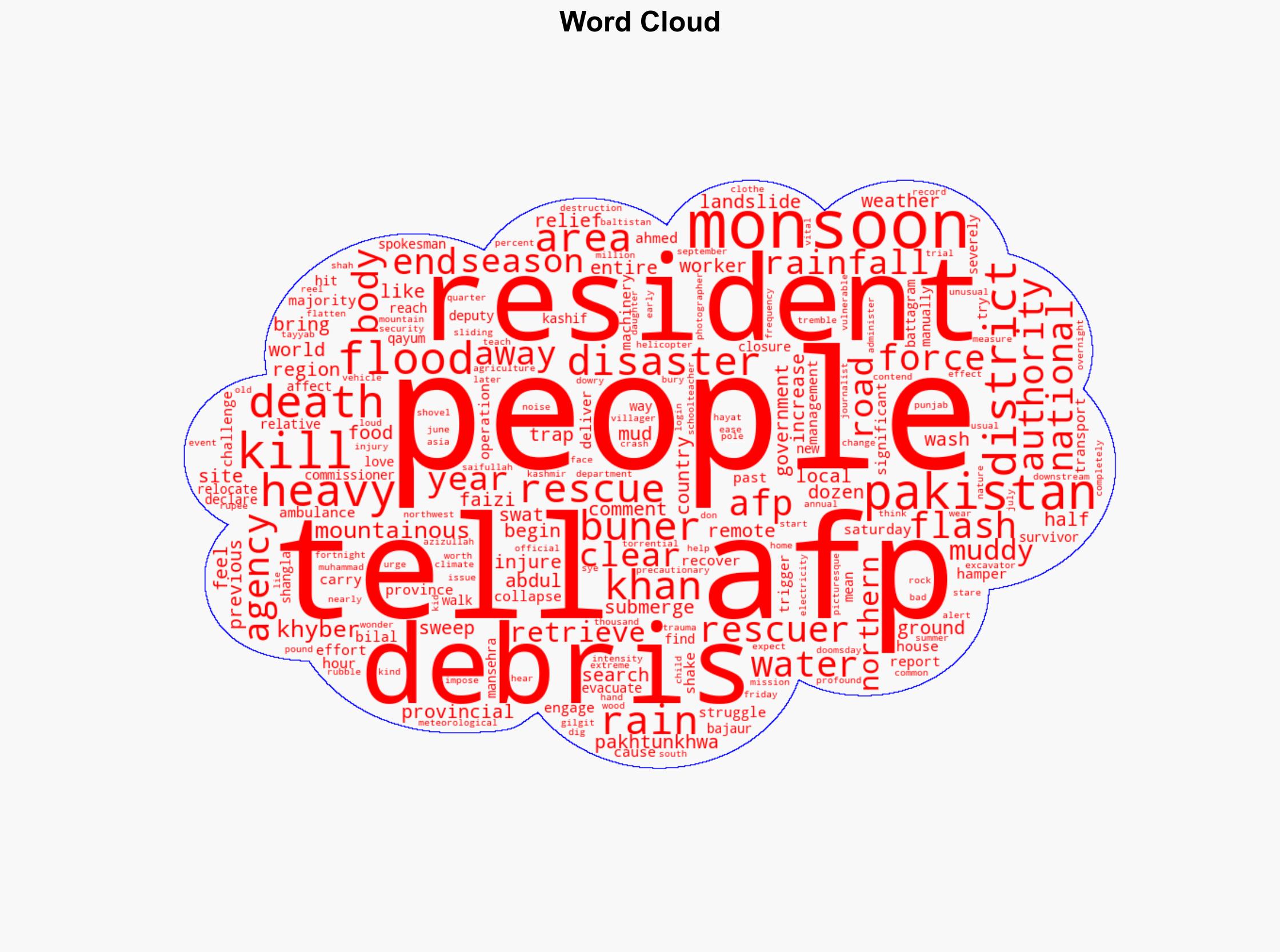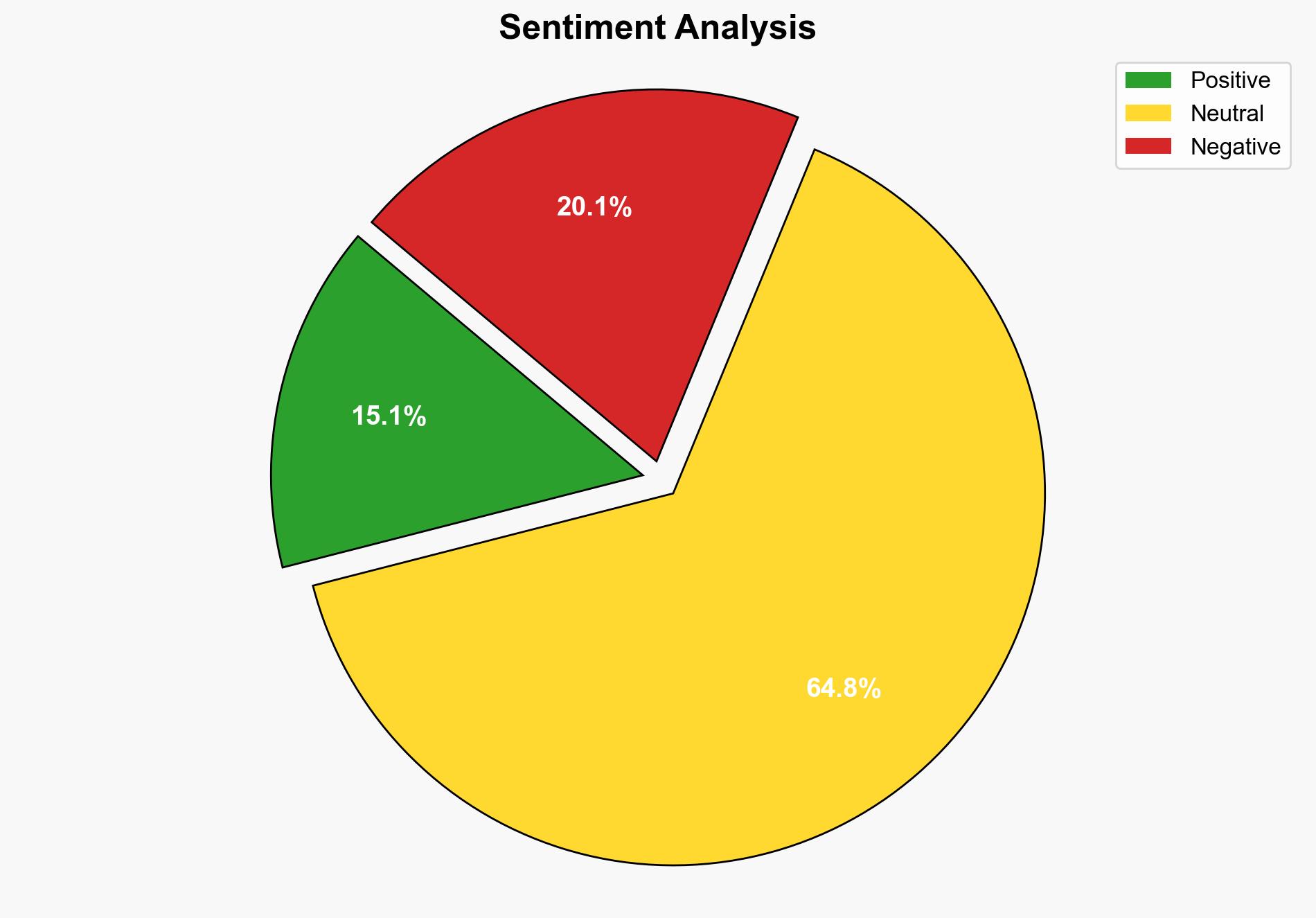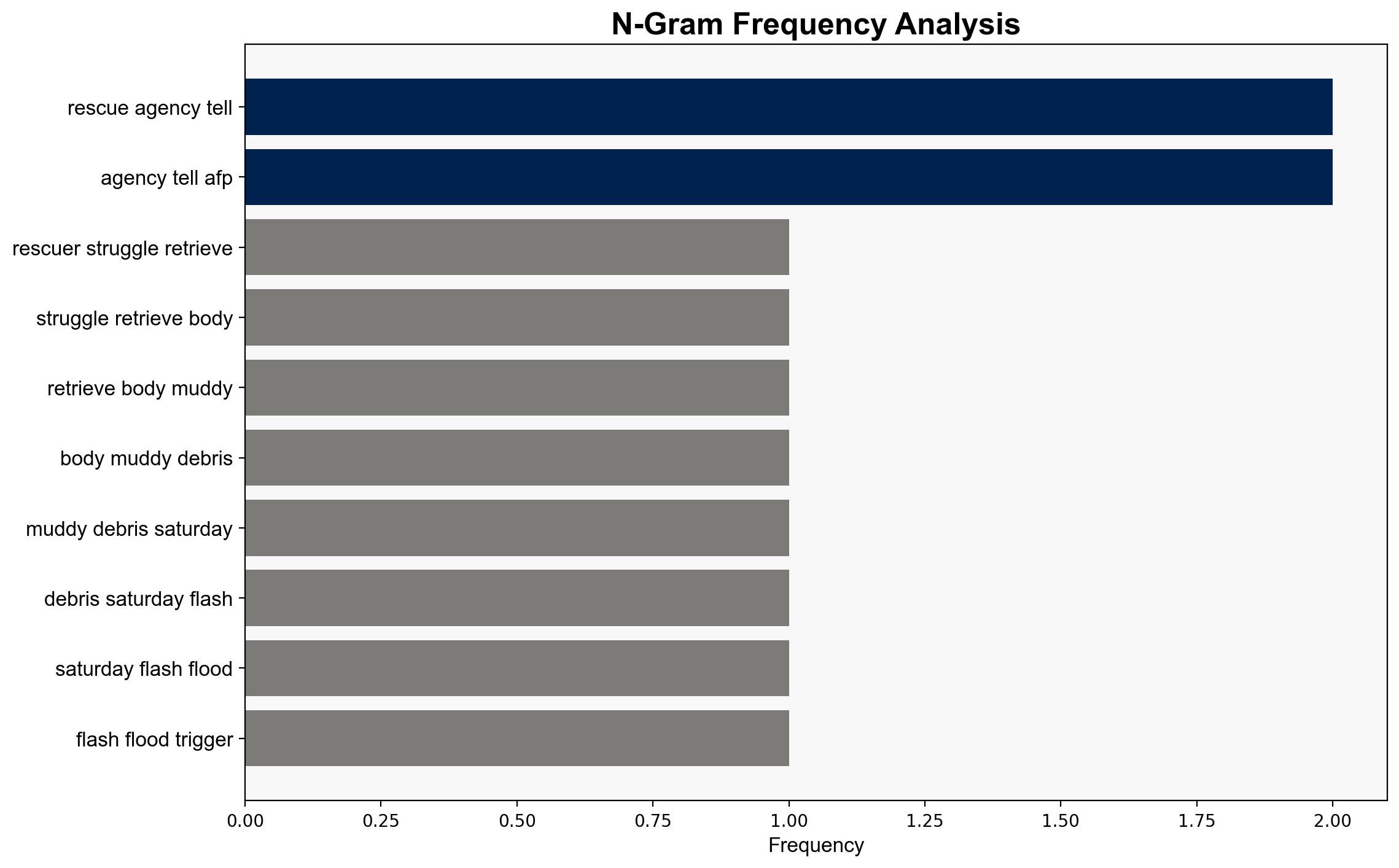Pakistan Rescuers Recover Bodies After Monsoon Rains Kill 320 – International Business Times
Published on: 2025-08-16
Intelligence Report: Pakistan Rescuers Recover Bodies After Monsoon Rains Kill 320 – International Business Times
1. BLUF (Bottom Line Up Front)
The monsoon rains in Pakistan have resulted in significant casualties and infrastructure damage, highlighting vulnerabilities to climate change and disaster response challenges. The most supported hypothesis is that climate change is exacerbating the frequency and intensity of monsoon events, necessitating improved disaster preparedness and infrastructure resilience. Confidence level: High. Recommended action: Enhance regional cooperation on climate adaptation and disaster response strategies.
2. Competing Hypotheses
1. **Climate Change Hypothesis**: The increased frequency and intensity of monsoon rains are a direct result of climate change, leading to more severe flooding and landslides.
2. **Infrastructure and Preparedness Hypothesis**: The high casualty rate and damage are primarily due to inadequate infrastructure and insufficient disaster preparedness, rather than changes in monsoon patterns.
Using ACH 2.0, the Climate Change Hypothesis is better supported by the data, including the early onset and increased intensity of the monsoon season, as well as historical patterns of extreme weather events in the region.
3. Key Assumptions and Red Flags
– **Assumptions**: It is assumed that the reported casualty figures are accurate and that the monsoon patterns are significantly altered by climate change.
– **Red Flags**: Potential underreporting of casualties in remote areas; lack of detailed meteorological data to conclusively link specific events to climate change.
– **Blind Spots**: Limited information on local government response capabilities and the effectiveness of existing infrastructure.
4. Implications and Strategic Risks
– **Economic Impact**: Significant damage to infrastructure could hinder economic recovery and development in affected regions.
– **Geopolitical Risks**: Increased strain on regional resources may lead to heightened tensions over water management and disaster aid.
– **Psychological Impact**: Repeated natural disasters can lead to long-term trauma and decreased public trust in government capabilities.
5. Recommendations and Outlook
- Enhance regional cooperation on climate adaptation strategies and disaster response planning.
- Invest in resilient infrastructure to withstand extreme weather events.
- Scenario Projections:
- Best: Effective international cooperation leads to improved infrastructure and reduced casualties in future events.
- Worst: Continued inaction results in increased frequency of disasters, exacerbating humanitarian crises.
- Most Likely: Incremental improvements in disaster response, but significant challenges remain due to resource constraints.
6. Key Individuals and Entities
– Bilal Ahmed Faizi
– Kashif Qayum Khan
– Azizullah
– Abdul Hayat
– Saifullah Khan
7. Thematic Tags
national security threats, climate change, disaster response, regional cooperation





